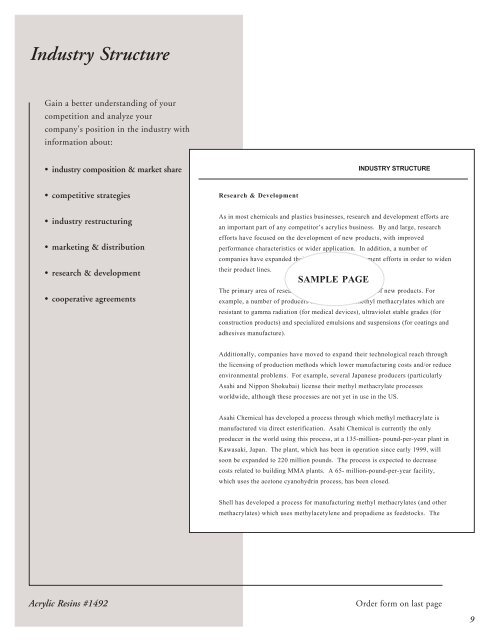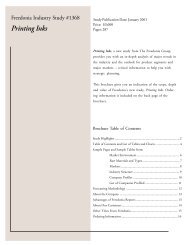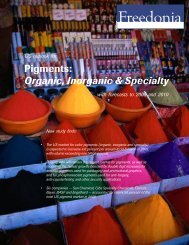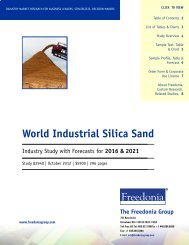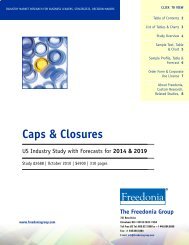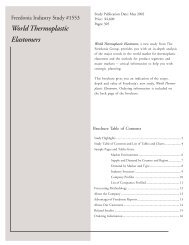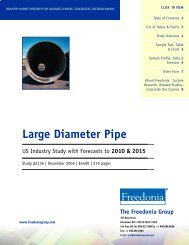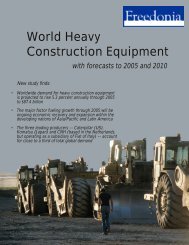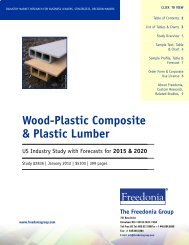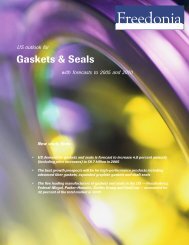Acrylic Resins - The Freedonia Group
Acrylic Resins - The Freedonia Group
Acrylic Resins - The Freedonia Group
You also want an ePaper? Increase the reach of your titles
YUMPU automatically turns print PDFs into web optimized ePapers that Google loves.
Industry Structure<br />
Sample page from<br />
<strong>Freedonia</strong> Industry Study<br />
Gain #1117 a better Fractional understanding Horsepower of your Motors<br />
competition and analyze your<br />
company's position in the industry with<br />
information about:<br />
• industry composition & market share<br />
• competitive strategies<br />
• industry restructuring<br />
• marketing & distribution<br />
• research & development<br />
• cooperative agreements<br />
Research & Development<br />
INDUSTRY STRUCTURE<br />
As in most chemicals and plastics businesses, research and development efforts are<br />
an important part of any competitor’s acrylics business. By and large, research<br />
efforts have focused on the development of new products, with improved<br />
performance characteristics or wider application. In addition, a number of<br />
companies have expanded their research and development efforts in order to widen<br />
their product lines.<br />
SAMPLE PAGE<br />
<strong>The</strong> primary area of research has been the development of new products. For<br />
example, a number of producers have developed methyl methacrylates which are<br />
resistant to gamma radiation (for medical devices), ultraviolet stable grades (for<br />
construction products) and specialized emulsions and suspensions (for coatings and<br />
adhesives manufacture).<br />
Additionally, companies have moved to expand their technological reach through<br />
the licensing of production methods which lower manufacturing costs and/or reduce<br />
environmental problems. For example, several Japanese producers (particularly<br />
Asahi and Nippon Shokubai) license their methyl methacrylate processes<br />
worldwide, although these processes are not yet in use in the US.<br />
Asahi Chemical has developed a process through which methyl methacrylate is<br />
manufactured via direct esterification. Asahi Chemical is currently the only<br />
producer in the world using this process, at a 135-million- pound-per-year plant in<br />
Kawasaki, Japan. <strong>The</strong> plant, which has been in operation since early 1999, will<br />
soon be expanded to 220 million pounds. <strong>The</strong> process is expected to decrease<br />
costs related to building MMA plants. A 65- million-pound-per-year facility,<br />
which uses the acetone cyanohydrin process, has been closed.<br />
Shell has developed a process for manufacturing methyl methacrylates (and other<br />
methacrylates) which uses methylacetylene and propadiene as feedstocks. <strong>The</strong><br />
<strong>Acrylic</strong> <strong>Resins</strong> #1492 Order form on last page<br />
9


